Enzo Ferrari
Forward Pass
Director:
Michael Mann
Production Designer:
Maria Djurkovic
Supervising Art Director:
Stephan Gessler
Lead Graphic Designer:
Alexa Galea
Graphic Designers:
Giulia Severini
Jules Gawlik
Assistant Graphic Designers:
Giovanna Della Torre
Jessica De Luca
Film based on a critical moment in the life story of the sports car entrepreneur, set in 1957 and shot on location in Modena and Northern Italy .
Forward Pass
Director:
Michael Mann
Production Designer:
Maria Djurkovic
Supervising Art Director:
Stephan Gessler
Lead Graphic Designer:
Alexa Galea
Graphic Designers:
Giulia Severini
Jules Gawlik
Assistant Graphic Designers:
Giovanna Della Torre
Jessica De Luca
Film based on a critical moment in the life story of the sports car entrepreneur, set in 1957 and shot on location in Modena and Northern Italy .



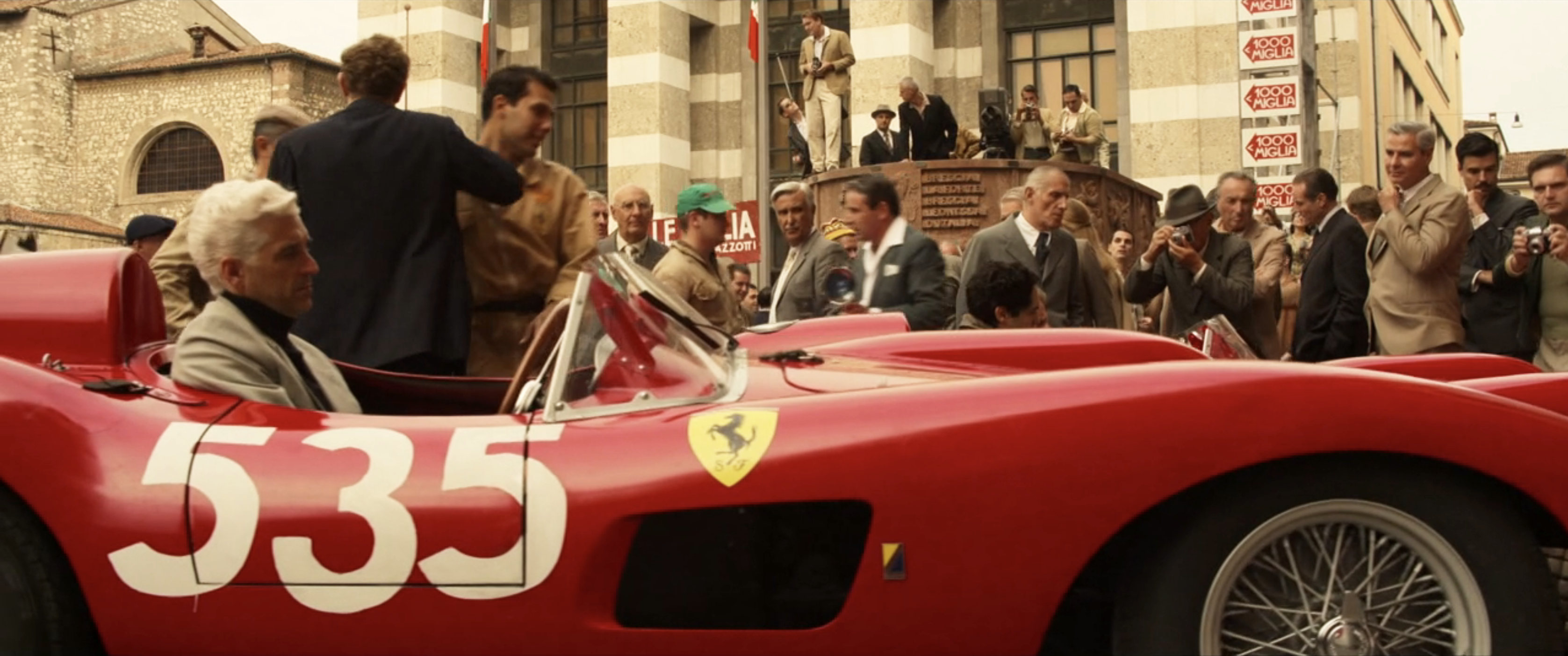



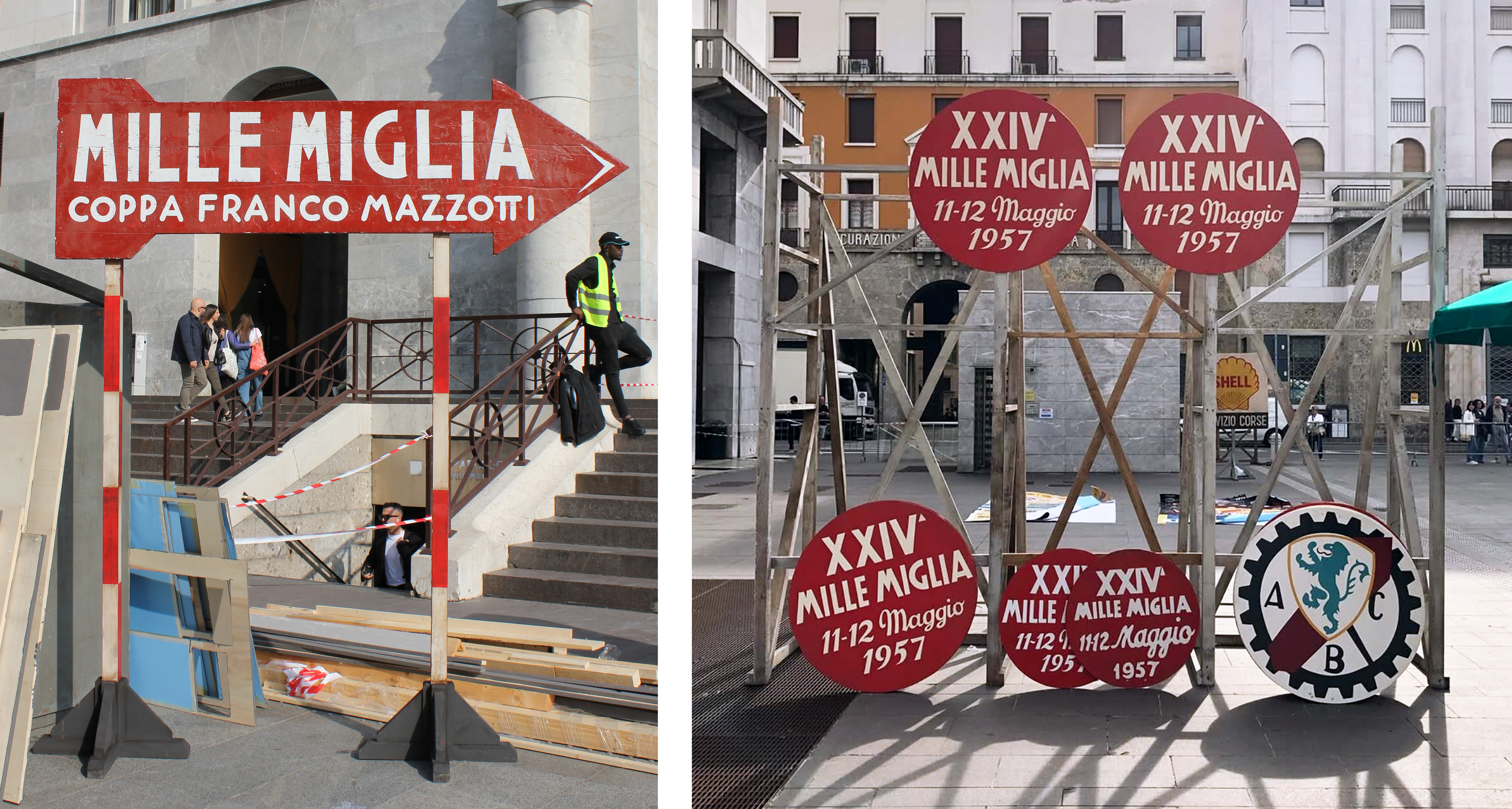




Piazza della Vittoria, Brescia – Shot at the real location, the site of the start and finish of the 1957 Mille Miglia race, this was a huge set: banners, signage, posters, flags, vehicle graphics, parasols, passes, driver paperwork, paletta del poliziotto, refreshments and souvenirs were all designed to recreate this legendary event with rigorous accuracy.





The starting ramp - Custom designed type to match the 1957 reference was handpainted on this monumental setpiece, which was over 32m in length and created from irregular wooden boards. Advertising and trackside graphics, race official’s paperwork and armbands, and starting flags were also designed and fabricated.

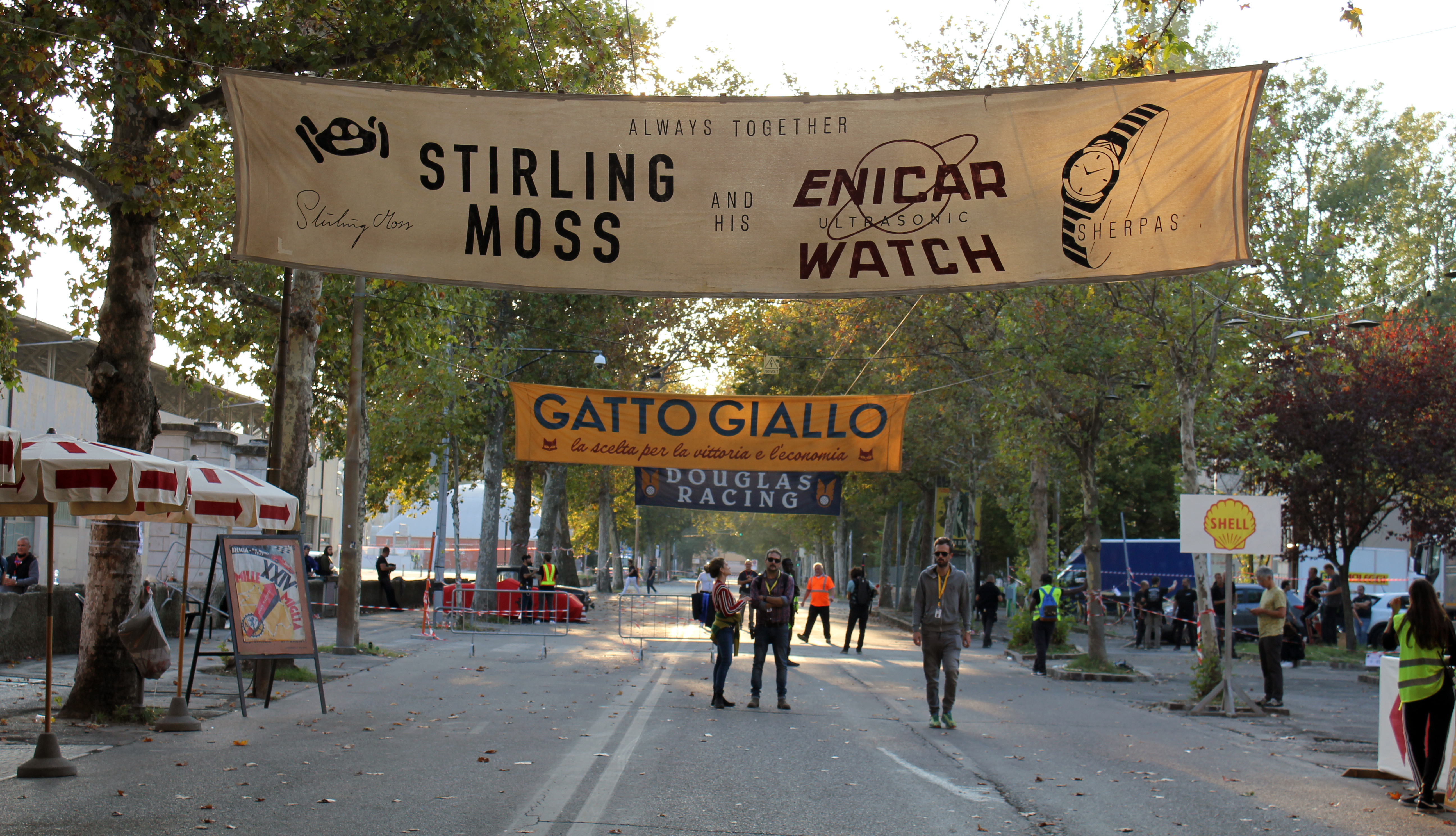


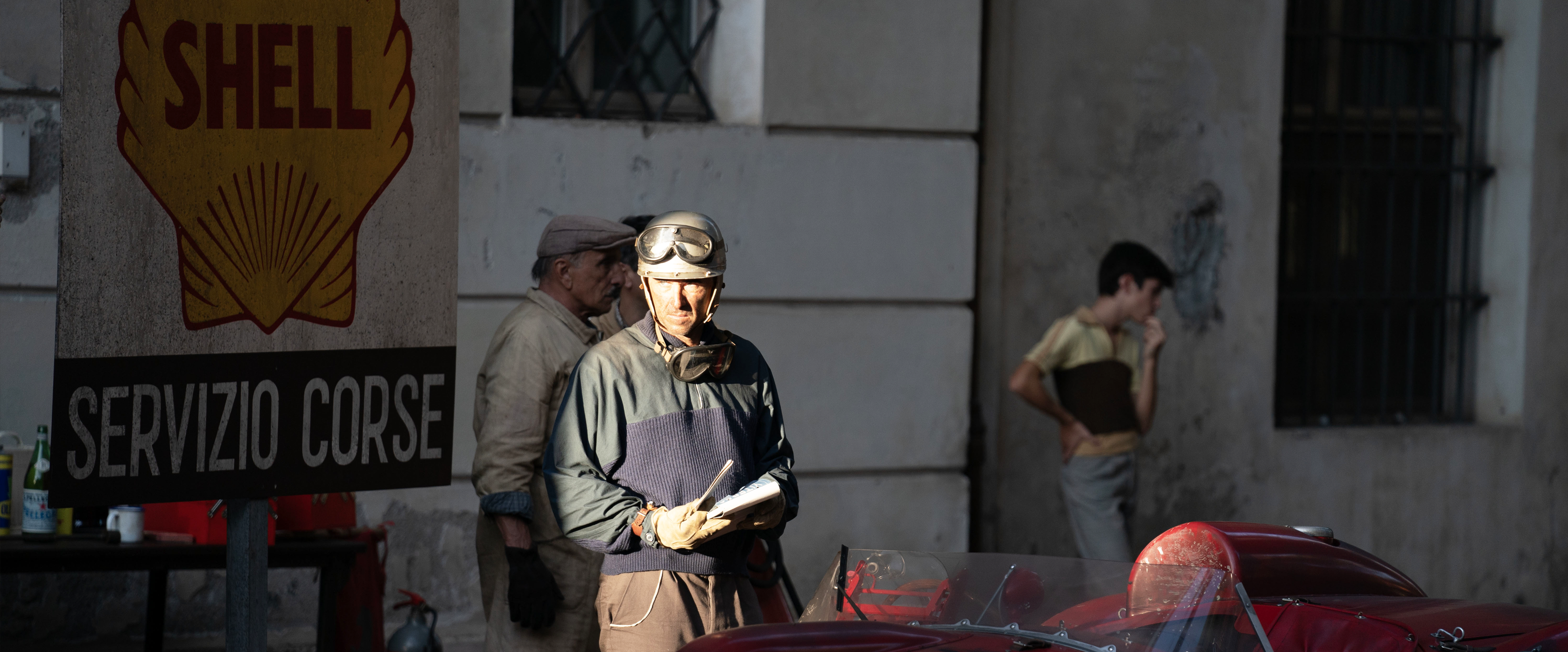


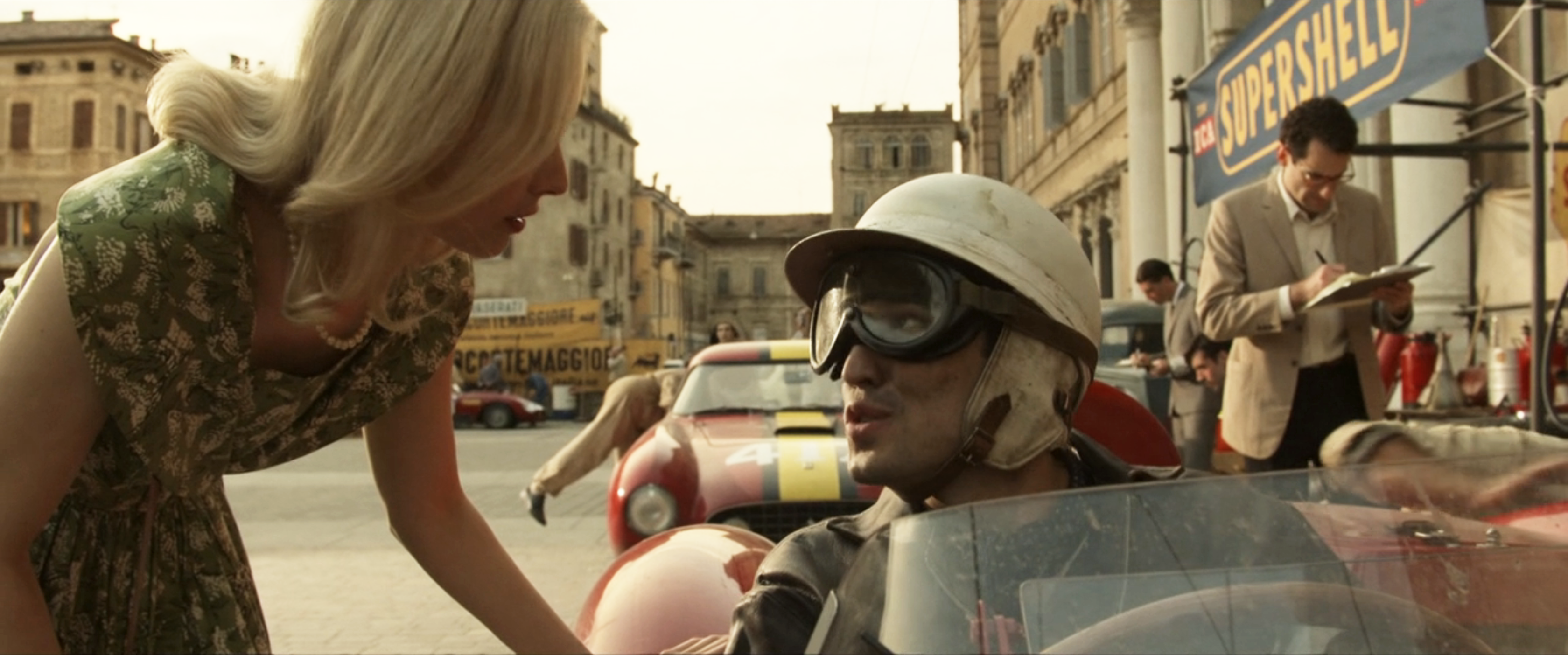




Trackside and vehicle graphics – Original and fictional banners were designed to align with the strict colour scheme of the film. Pit stop graphics included petrol pumps, oil drums, fire extinguishers, team flags, race boards, driver refreshments, and advertisements.
In the Mille Miglia, cars were assigned numbers that corresponded to their starting time, and every number was individually drawn to match the 1957 participants’ vehicles. Methods also had to be devised to paint or apply these numbers without damage to irreplaceable original cars on loan to the film. Hero racing number plates and hundreds of 1950s Italian dressing number plates were also designed and fabricated.


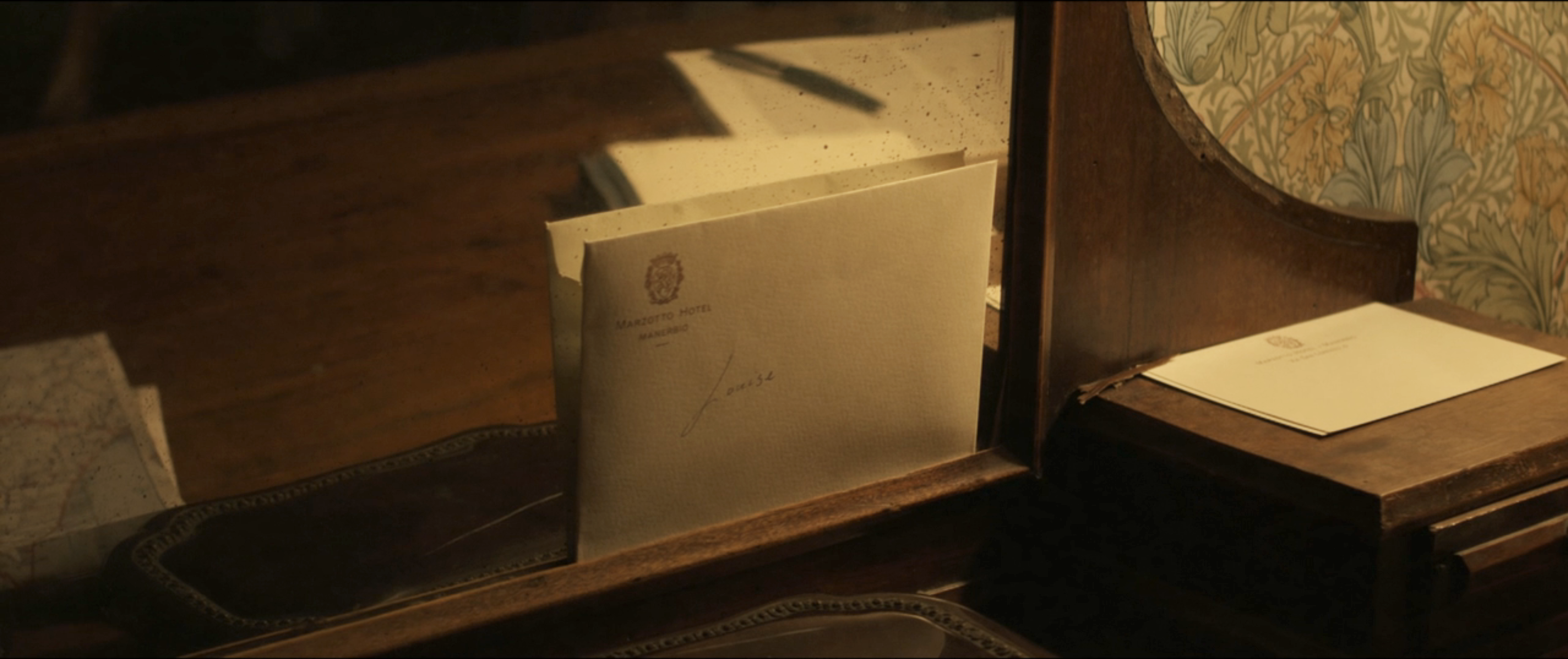

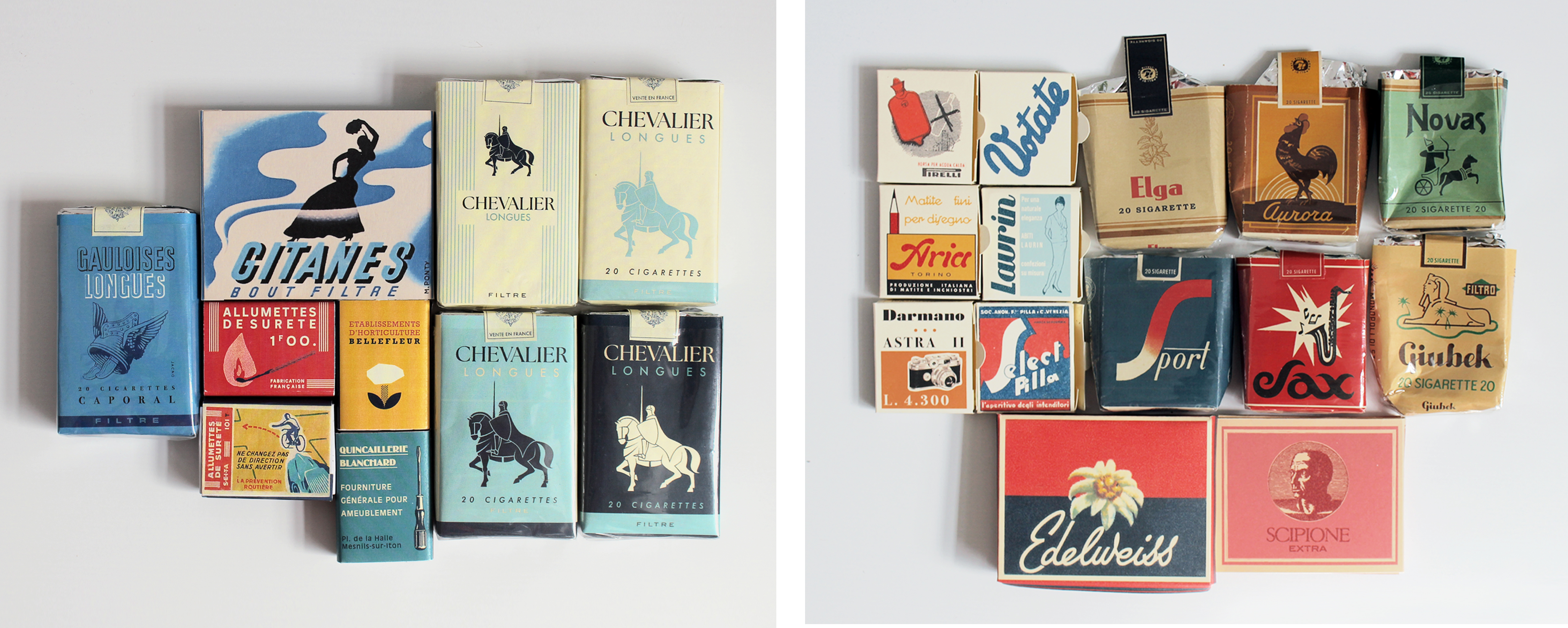
Driver notes and personal items – Mille Miglia driver books and stamps, necklace tags, maps, Ferrari driver booklets, race notes, driving and racing licenses, ID cards, personal letters, French and Italian cigarettes and matchbooks.


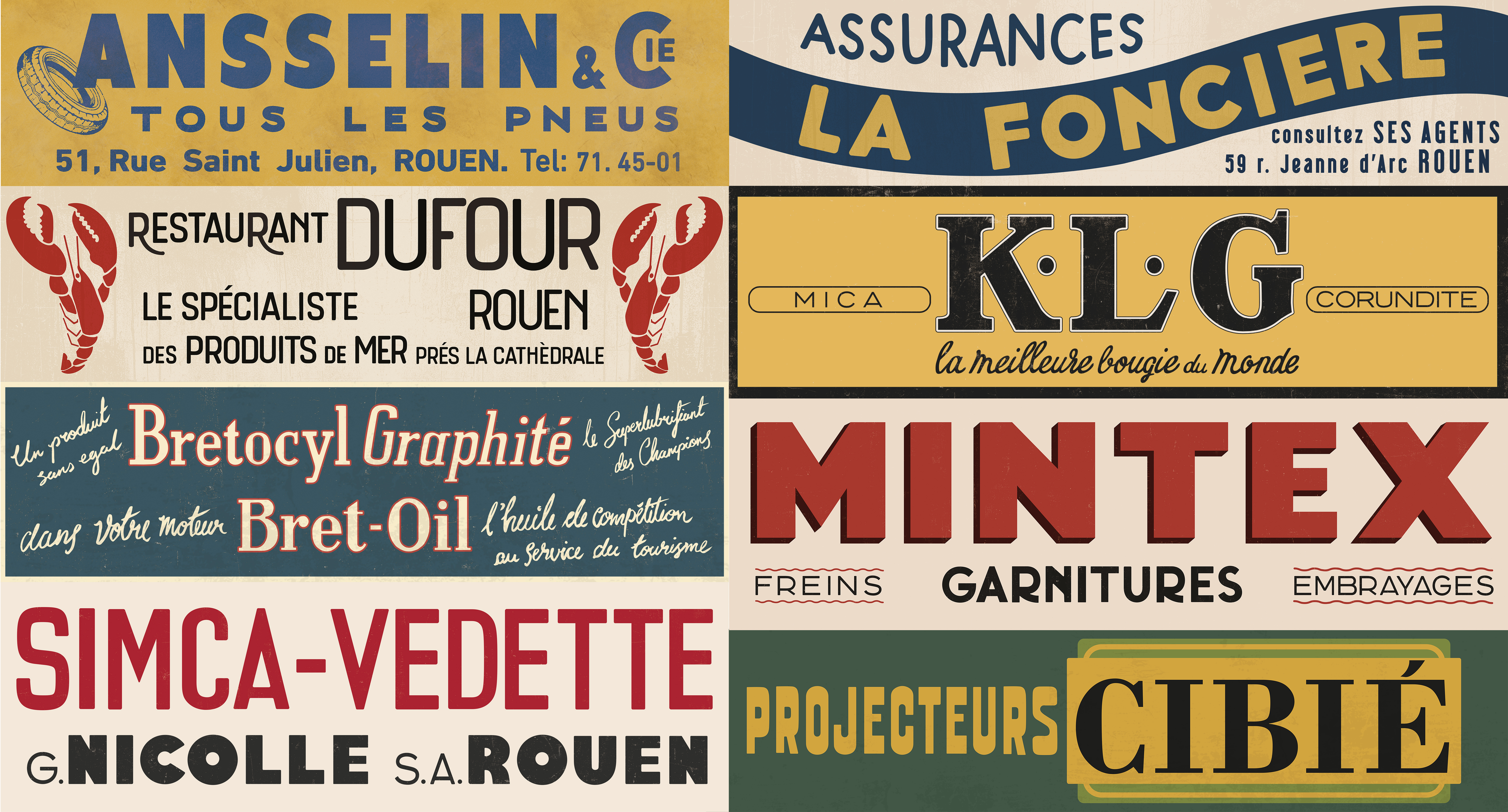

French Grand Prix, Rouen-Les-Essarts - Pit stop advertising graphics designed to recreate the original boards at this racetrack in 1957. These were handpainted to capture the fluidity and rough handcrafted nature of the original boards.






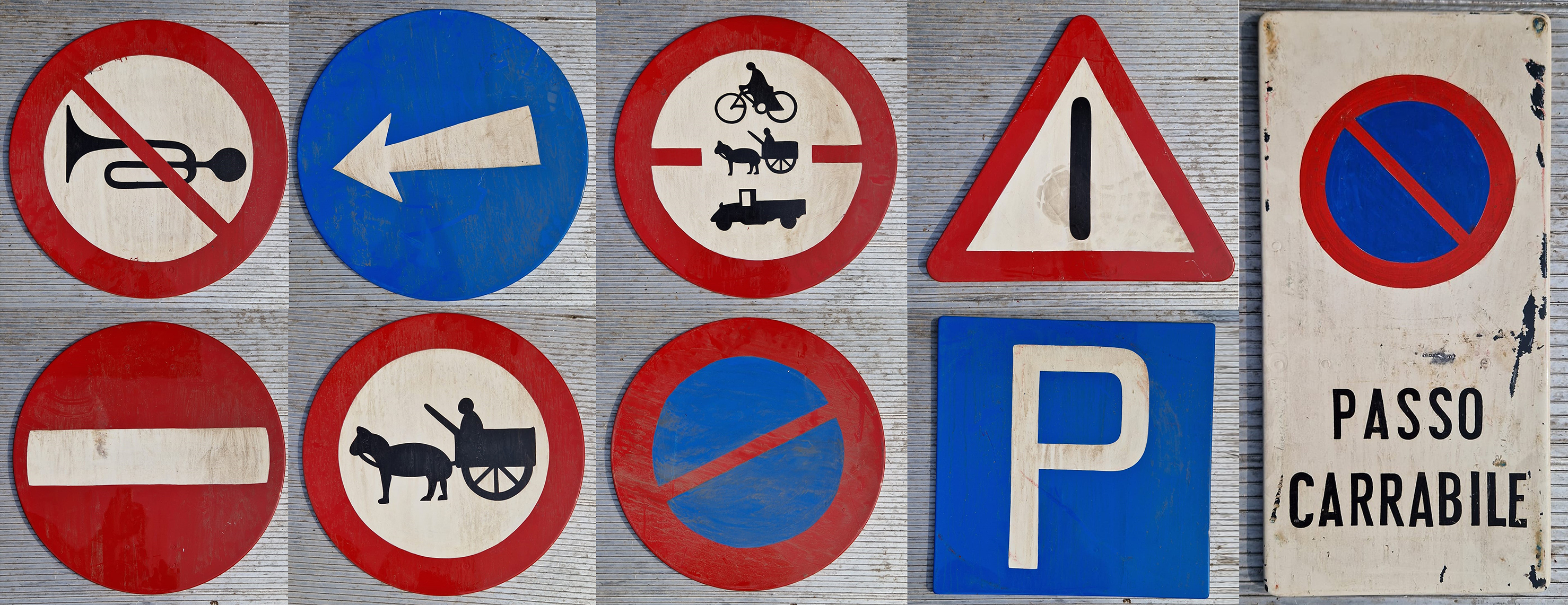




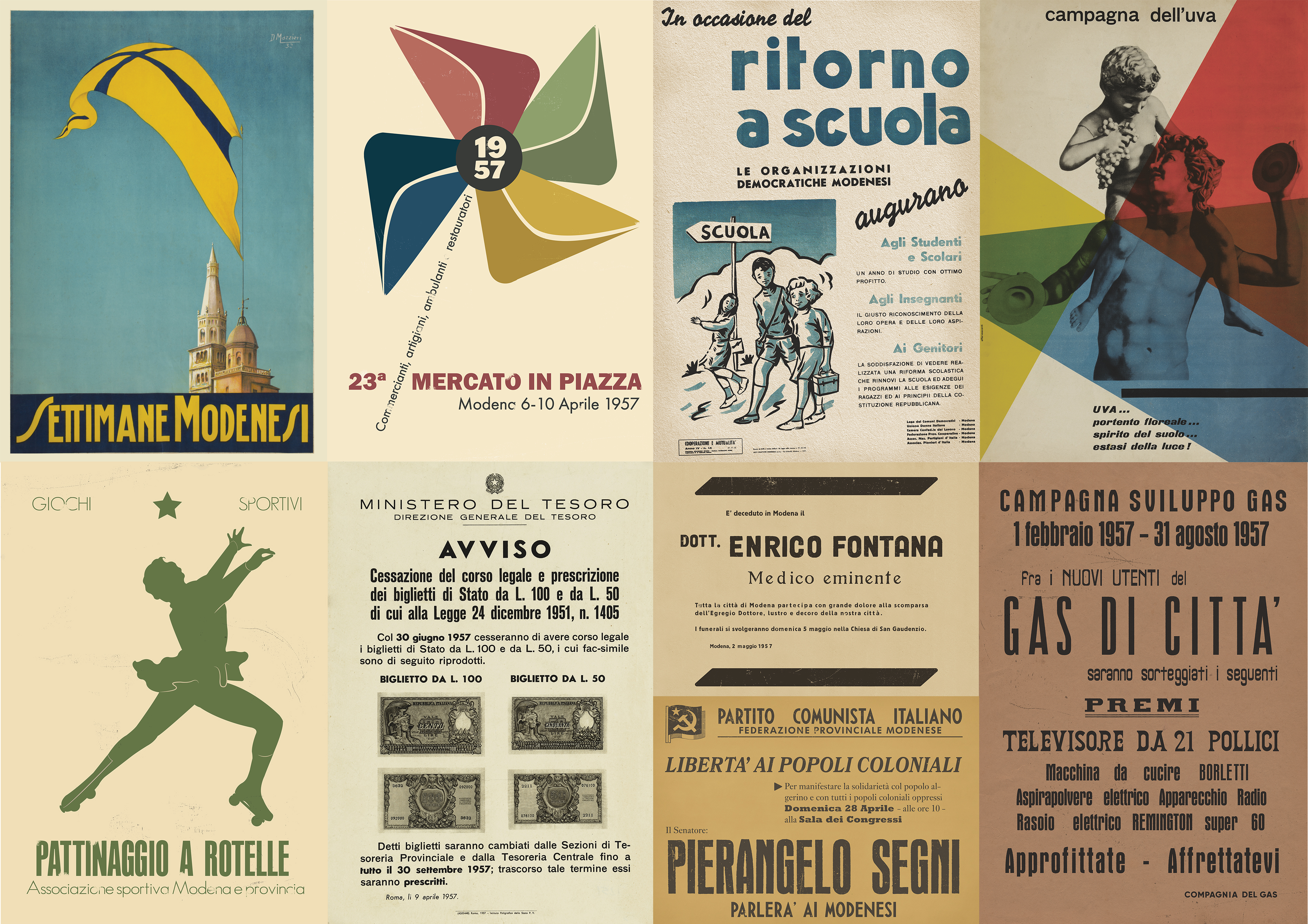
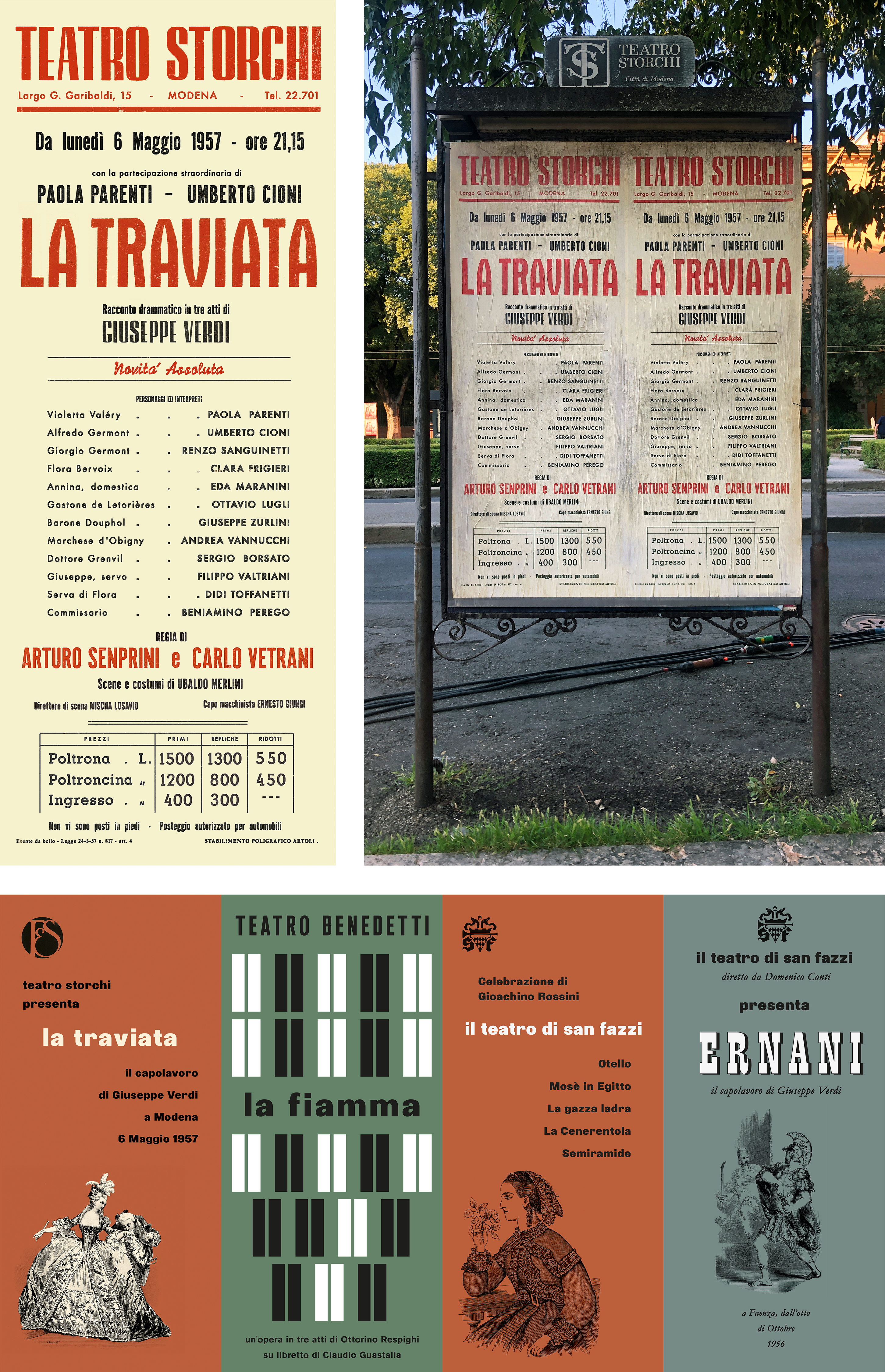

Enzo Ferrari’s Modena – Graphics for the streets of Modena and key locations in Ferrari’s life were recreated or redesigned to fit our shooting locations and the film’s colour scheme, including the Cavallino restaurant and Da Antonio barbershop. Production Designer Maria Djurkovic and I chose to emphasize the industrial nature of the city, working with bold typography, left-wing propaganda, obituary notices, and local events in street dressing posters.
The performance of ‘La Traviata’ at Teatro Storchi is a key moment in the screenplay and required a distinctive poster that appears throughout the film. Opera, exhibition, and music posters and programmes in Lina Lardi’s home were used to highlight the differences in her interests and lifestyle.


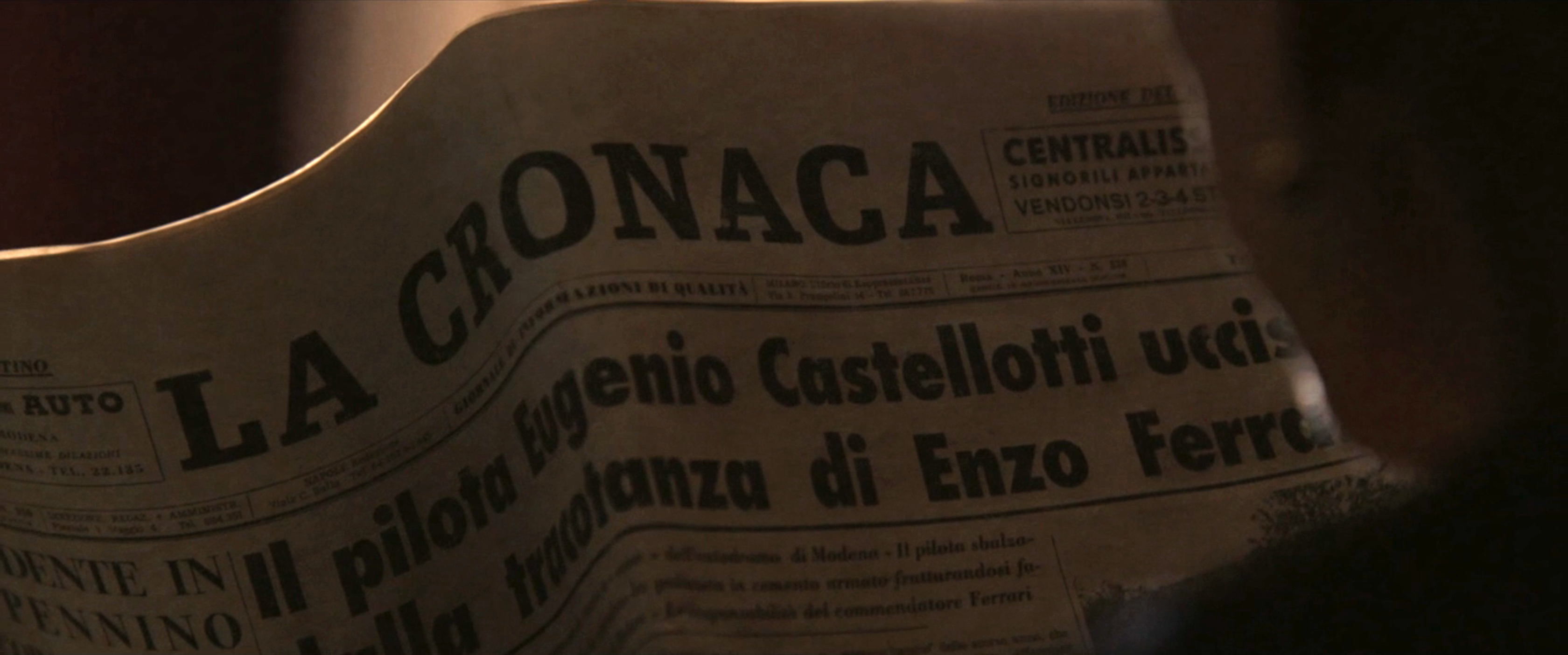

Newspapers and print publications - Numerous newspaper articles are referenced in the screenplay and were carefully designed to reflect the significance of each feature. I sourced 1950s editions of Modena Calcio from the monthly antiques market and these went on to play a hero role in Da Antonio! Fabriano papers were carefully chosen for printing to compliment the colour scheme of the film and capture the distinctive pink of La Gazzetta dello Sport.
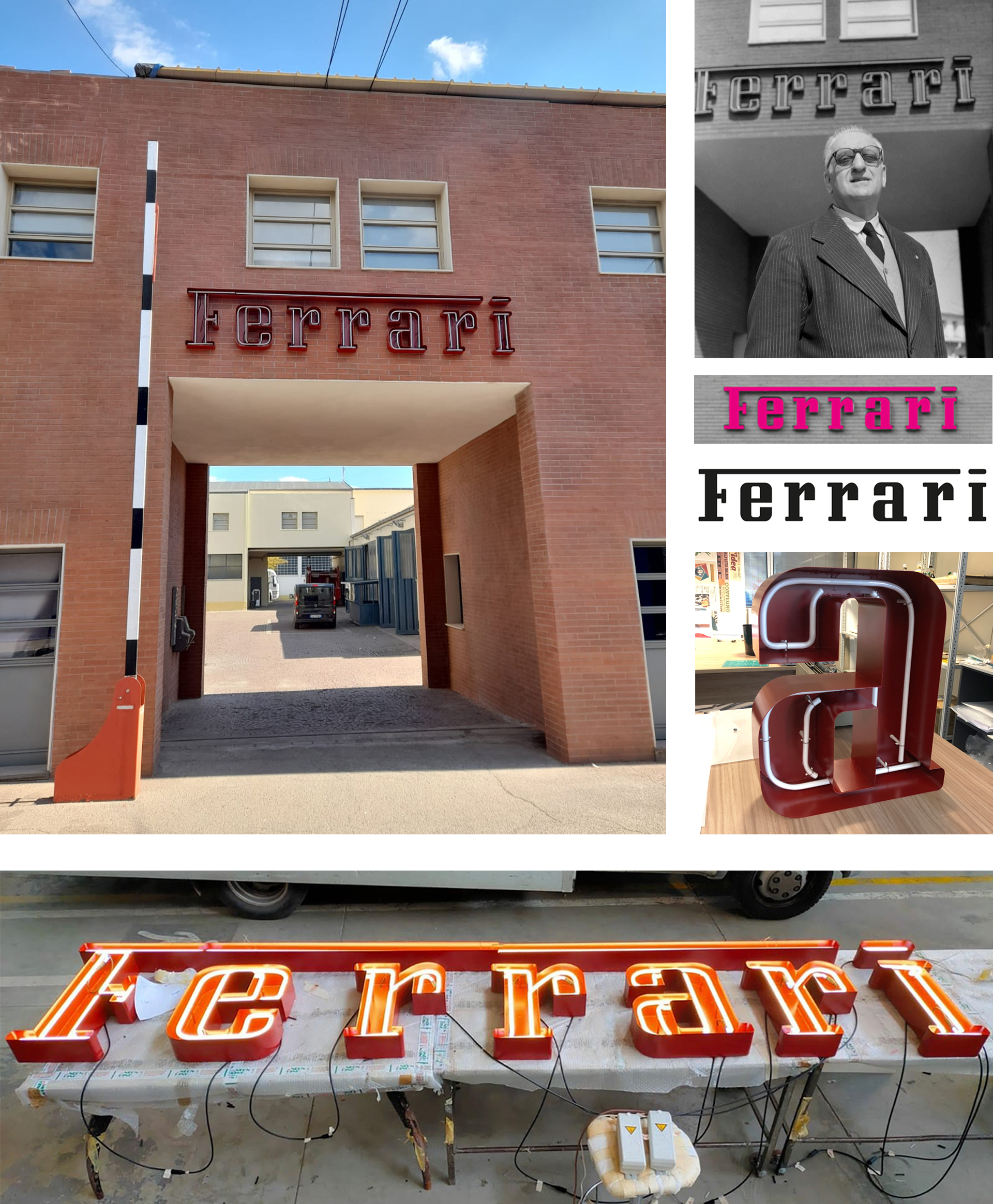






Ferrari factory and technical drawings – To accurately recreate the iconic neon Ferrari sign, I redrew the lettering from scratch using reference photographs, as every iteration of the logo type varied throughout the 1950s.
We worked closely with the Ferrari archive to create: signage in the factory, paperwork, press files, engineering reports, parts lists, technical drawings and Enzo Ferrari’s personal papers. The hero technical drawing was drawn to accurately depict a 1957 Ferrari racing engine intake manifold, with the high level of detail required by director Michael Mann.








Graphics paper trail – A series of hero financial and legal documents were to key to Laura Ferrari’s narrative - her discovery of Ferrari’s mistress revealed through the Ferrari accounts, and her complicated financial relationship with Enzo and their business. Given their close-up use on screen, their content and details were meticulously researched and designed to ensure period accuracy.





Wallpaper and surface design - At the request of Michael Mann a wallpaper and textile design for Enzo and Laura Ferrari’s house was created as an homage to a wallpaper seen in Ferrari’s real home. A large amount of surface design and print was required for numerous sets throughout the film including painted kitchen tiles, terrazzo and parquet flooring, period wallpapers, and wall panels printed to match existing marble in the bank set.